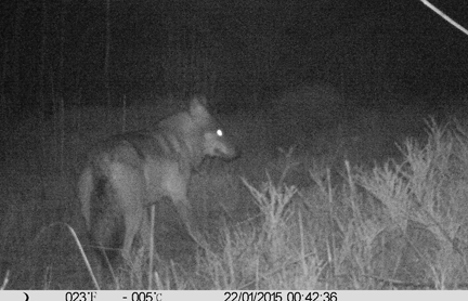The camera, set up in a forested area in the Siegen-Wittgenstein district east of Cologne, snapped a picture of the wolf on January 22nd.
It was confirmed to be a wolf by researchers at the Institute for Wolf Monitoring and Research in Germany (LUPUS).

DNA samples from the area have been sent to the Wild Animal Genetics Laboratory in Geinhausen, Hesse, to check whether it is the same animal that was spotted in the Minden-Lübbecke district at the end of December.
That animal was confirmed to be a wolf by DNA test results released last week.
But the environment ministry won't know whether the wolf lives in the state or was simply passing through until more observations are made.
Wolves have not lived in the area now covered by the state of North Rhine-Westphalia since the mid-19th Century.
One wolf was killed in 1963, but it was never established where it came from.
Prior to that the last record of a wolf being killed was in 1835.
SEE ALSO: Wolf decapitator hunted by police


 Please whitelist us to continue reading.
Please whitelist us to continue reading.
Member comments